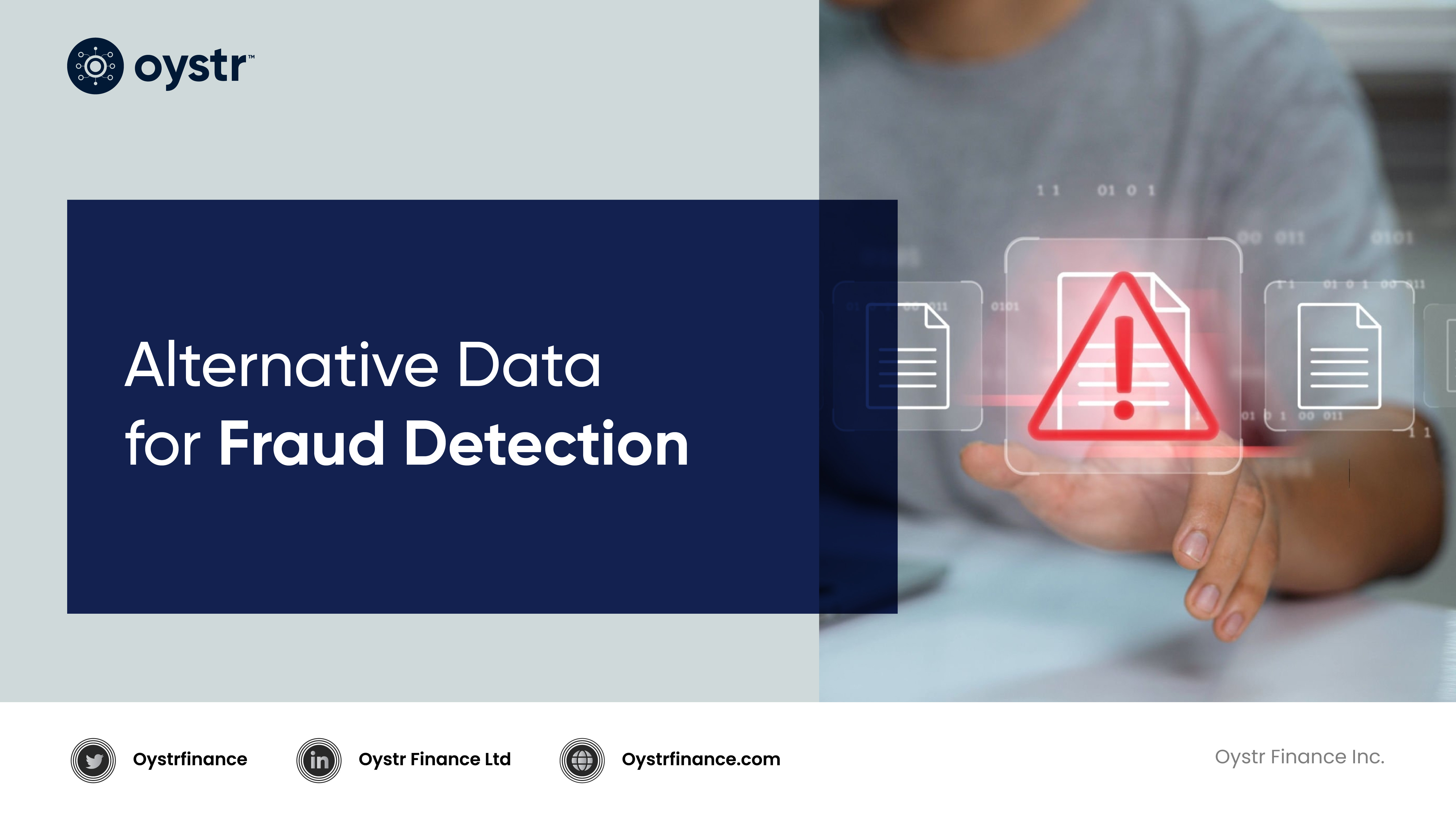Alternative Data for Fraud Detection
 Oluwagbemi Oladunjoye
Oluwagbemi Oladunjoye
The dynamic realm of finance will always be at war with fraud and it remains a relentless pursuit. As technology advances and financial transactions increasingly migrate to the digital sphere, fraudsters adapt their tactics, constantly devising new ways to exploit vulnerabilities. Traditional fraud detection methods, relying solely on credit history and financial data, often fall short in identifying these evolving threats.
Enter the transformative power of alternative data. This vast reservoir of information, collected from non-traditional sources beyond traditional credit bureaus, offers a wealth of insights into borrower behavior and patterns, providing a more comprehensive understanding of individual creditworthiness. By incorporating alternative data into their fraud detection strategies, financial institutions can enhance their ability to identify and prevent fraudulent activities.
In this article, we'll discuss how alternative data is helping in fraud detection and its benefits to the fintech industry as a whole.
The Rise of Fintech and the Need for Enhanced Fraud Detection
The financial technology (fintech) industry has revolutionized the way individuals and businesses access and manage their finances. By leveraging innovative technologies and data analytics, fintech companies have streamlined financial services, making them more accessible and convenient. However, this rapid growth and digital transformation have also created new opportunities for fraudsters to exploit.
With the increasing volume of transactions occurring online and through mobile devices, traditional fraud detection methods are often unable to keep pace. Credit history and financial data, while valuable, may not provide a complete picture of an individual's creditworthiness or reveal hidden risks. Alternative data, on the other hand, offers a more holistic perspective, enabling financial institutions to make informed decisions and mitigate fraud risks more effectively.
A Multifaceted Approach to Fraud Detection
Alternative data encompasses a diverse array of information sources, ranging from social media and online activity to transactional data and behavioral patterns. The breadth and granularity of this data provide financial institutions with a deeper understanding of borrowers, enabling them to identify anomalies and potential red flags that may indicate fraudulent intent.
Here are some examples of alternative data that can be leveraged for fraud detection:
Social Media Data: Analyzing social media profiles and activity can provide insights into an individual's lifestyle, interests, and connections, helping to verify identity and assess potential risk factors.
Online Transaction Data: Tracking online purchases, e-commerce activity, and payment behavior can reveal patterns that may indicate fraudulent transactions or anomalous spending habits.
Device Usage Data: Examining device usage patterns, including location data, app usage, and browsing history, can help to identify potential device manipulation or unauthorized access attempts.
Psychographic Data: Gathering information on an individual's personality traits, attitudes, and values can provide additional context for assessing creditworthiness and identifying potential fraud risks.
By combining these diverse data sources and applying sophisticated machine learning algorithms, financial institutions can develop robust fraud detection models that are more effective in identifying and preventing fraudulent activities.
Benefits of Leveraging Alternative Data for Fraud Detection
The integration of alternative data into fraud detection strategies offers several significant benefits to financial institutions:
Enhanced Fraud Detection Accuracy: Alternative data provides a richer and more comprehensive view of borrowers, enabling financial institutions to identify fraudulent activities with greater precision.
Reduced False Positives: By analyzing a wider range of variables, alternative data can help to reduce the number of false positives, minimizing disruptions to legitimate customer transactions.
Improved Risk Assessment: Alternative data can enhance risk assessment processes, enabling financial institutions to make more informed decisions about lending and creditworthiness.
Personalized Customer Experience: By gaining a deeper understanding of their customers, financial institutions can provide more personalized and tailored financial services, fostering stronger customer relationships.
Navigating the Regulatory Landscape
As the use of alternative data for fraud detection expands, it is crucial for financial institutions to carefully navigate the evolving regulatory landscape. Data privacy laws and consumer protection regulations vary across jurisdictions, and it is essential to ensure compliance with all applicable requirements.
Financial institutions should implement robust data governance practices to ensure the responsible collection, storage, and use of alternative data. This includes obtaining informed consent from individuals, implementing data security measures, and establishing clear data usage policies.
Conclusion
Alternative data has emerged as a powerful tool in the fight against fraud, providing financial institutions with a wealth of insights to enhance their fraud detection capabilities. By leveraging this diverse and valuable data source, financial institutions can protect their assets, safeguard their customers, and promote a safer and more trustworthy financial ecosystem.
Oystr Finance's use of alternative data has been successful in reducing fraud rates and improving the accuracy of customer information. The company has also been able to expand its reach to underserved customers who may not have access to traditional credit products.
Reach out to us here to get started.
Subscribe to my newsletter
Read articles from Oluwagbemi Oladunjoye directly inside your inbox. Subscribe to the newsletter, and don't miss out.
Written by

Oluwagbemi Oladunjoye
Oluwagbemi Oladunjoye
A versed copywriter, fueled with a creative mind brimming with a wealth of ideas.